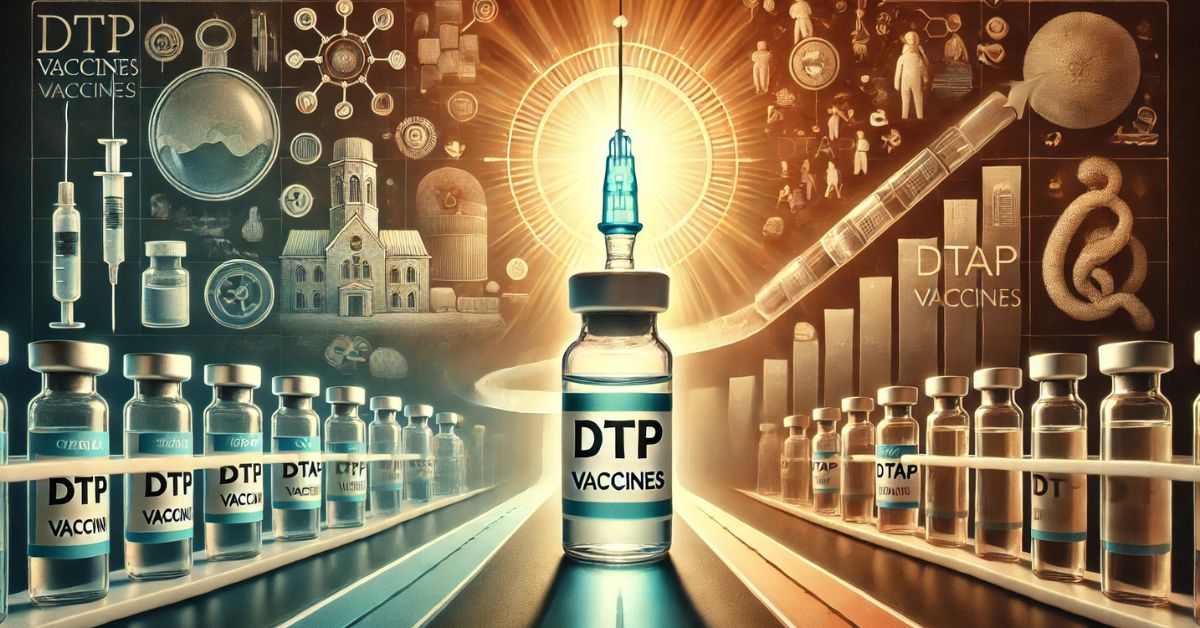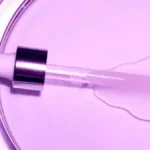Vaccination has long been one of the most effective tools in preventing the spread of infectious diseases, saving millions of lives worldwide. Among the most important vaccines for children is the diphtheria, tetanus, and pertussis vaccine, commonly referred to as the DTP vaccine or DTaP vaccine, depending on the specific formulation used. Understanding the history and evolution of this vaccine is crucial, not only for recognizing its role in protecting children’s health but also for appreciating how advances in immunology and vaccine development have improved public health outcomes.
In this article, we will explore the differences between DTP and DTaP vaccines, their historical context, the diseases they prevent, the changes that led to the shift from DTP to DTaPs, and the impact of these vaccines on global health. Along the way, we will look at the mechanism of action of these vaccines, their safety, the vaccination schedule, and the role of immunization in the prevention of deadly diseases.
1. What is DTP and DTaP?
The terms DTP and DTaP both refer to vaccines that protect against three serious infectious diseases: diphtheria, tetanus, and pertussis (whooping cough). Both versions of the vaccine contain the same essential components, but they differ in the way the vaccine is formulated, which affects its safety profile and age recommendations.
DTP Vaccine:
The DTP vaccine is an older formulation of the vaccine that was first introduced in the 1940s. The “DTP” stands for:
- Diphtheria: A bacterial infection that causes a thick covering in the back of the throat, which can lead to breathing difficulties, heart failure, and even death if left untreated.
- Tetanus: A bacterial infection that causes severe muscle stiffness and spasms, typically starting in the jaw and neck. It is caused by the bacterium Clostridium tetani, often introduced through wounds or cuts.
- Pertussis (Whooping Cough): A highly contagious respiratory disease caused by Bordetella pertussis bacteria, characterized by severe coughing spells that can be life-threatening, especially in young infants.
The DTP vaccine contains whole-cell pertussis (wP), meaning that the vaccine was made from inactivated, whole bacteria. While effective, the whole-cell formulation had some significant side effects, such as fever, redness at the injection site, and more severe reactions in some children, which led to discomfort and reluctance to get vaccinated.
DTaP Vaccine:
In the 1990s, a safer and more refined version of the DTP vaccine was developed, called the DTaP vaccine. The “DTaP” stands for:
- Diphtheria (D)
- Tetanus (T)
- Acellular Pertussis (aP)
The main difference between DTP and DTaP is the pertussis component. Instead of using the entire, inactivated pertussis bacteria (whole-cell pertussis), the DTaP vaccine uses an acellular pertussis component, which means it contains only specific parts (or antigens) of the Bordetella pertussis bacteria rather than the entire bacterial organism. This reduces the risk of side effects and makes the vaccine generally safer, particularly for young children.
While both vaccines protect against the same three diseases, the DTaP vaccine has a better safety profile, fewer side effects, and is the preferred formulation used in modern childhood immunization schedules.
2. The Diseases Prevented by DTP and DTaP
Before delving deeper into the differences between these vaccines, it’s important to understand the diseases they protect against.
Diphtheria:
Diphtheria is caused by the bacterium Corynebacterium diphtheriae. It primarily affects the upper respiratory system and can cause severe complications like:
- Airway obstruction: The bacteria produce a toxin that leads to the formation of a thick membrane in the throat, which can block the airway and make it difficult to breathe.
- Heart damage: The diphtheria toxin can damage the heart muscle, potentially leading to heart failure.
- Nerve damage: The toxin can also cause damage to the peripheral nerves, leading to paralysis in severe cases.
Diphtheria was once a major cause of illness and death in children, especially in the early 20th century. However, with the advent of the diphtheria vaccine, cases of diphtheria have dropped dramatically worldwide.
Tetanus:
Tetanus is caused by the bacterium Clostridium tetani, which is found in soil, dust, and animal feces. When the bacterium enters the body through a wound or cut, it produces a neurotoxin that causes severe muscle spasms, starting with the jaw (often referred to as “lockjaw”). Symptoms include:
- Muscle stiffness and spasms: This can lead to difficulty swallowing, breathing, and even death.
- Autonomic dysfunction: Tetanus can affect the autonomic nervous system, causing dangerous fluctuations in blood pressure and heart rate.
- Respiratory failure: In severe cases, the muscles responsible for breathing can become paralyzed, leading to death if not treated.
Tetanus is not contagious, but it can be deadly if untreated. Vaccination is crucial for preventing this disease.
Pertussis (Whooping Cough):
Pertussis, commonly known as whooping cough, is a highly contagious respiratory disease caused by Bordetella pertussis. The disease is marked by severe coughing spells that can last for weeks. Key symptoms include:
- Severe coughing fits: The cough is often followed by a “whooping” sound as the person tries to inhale after a coughing spell.
- Coughing-induced vomiting: The coughing fits are so intense that they can cause vomiting.
- Infant complications: Pertussis is particularly dangerous for infants, leading to severe complications like pneumonia, brain damage, and even death.
Despite being preventable through vaccination, pertussis has seen a resurgence in recent years, primarily due to declining vaccination rates and the waning immunity in adults.
3. The Transition from DTP to DTaPs: Safety and Effectiveness
The introduction of the DTP vaccine in the 1940s represented a significant breakthrough in the fight against these three deadly diseases. However, as effective as the vaccine was in preventing diphtheria, tetanus, and pertussis, it was also associated with some adverse side effects. These side effects were primarily related to the whole-cell pertussis component, which could cause reactions such as:
- Fever
- Swelling and redness at the injection site
- Crying and irritability
- Rarely, more severe reactions like seizures or encephalitis (inflammation of the brain)
In the 1990s, the development of the DTaP vaccine marked a significant step forward in vaccine safety. The shift from a whole-cell pertussis component to an acellular pertussis component made the vaccine safer while still providing strong protection against the three diseases. Some of the advantages of the DTaP vaccine include:
- Fewer side effects: The acellular pertussis component causes fewer adverse reactions, particularly in young children.
- Better tolerance: Studies have shown that DTaP is better tolerated and has a much lower risk of causing severe reactions compared to DTP.
- Increased compliance: Parents are more likely to ensure their children are vaccinated when the vaccine has fewer side effects.
As a result, DTaPs became the standard vaccine recommended for children, replacing DTP in most immunization schedules around the world.
4. The Immunization Schedule: When Should Children Receive the DTaP Vaccine?
The DTaP vaccine is typically administered in a series of five doses as part of routine childhood immunization. The Centers for Disease Control and Prevention (CDC) and the World Health Organization (WHO) recommend the following schedule for DTaP vaccination:
- First dose: At age 2 months
- Second dose: At age 4 months
- Third dose: At age 6 months
- Fourth dose: At age 15-18 months
- Fifth dose: Between 4-6 years of age (before entering school)
In addition to these primary doses, children may receive a booster dose of the Tdap vaccine (which is similar to DTaP but formulated for adolescents and adults) during adolescence (usually at age 11 or 12). This booster helps maintain immunity against pertussis, tetanus, and diphtheria as the protection from the childhood series begins to wane.
5. Impact of DTaP Vaccination on Public Health
The widespread use of the DTaP vaccine has had a profound impact on global health. Since the introduction of DTP and later DTaP, rates of diphtheria, tetanus, and pertussis have dropped significantly. The benefits of the DTaP vaccine are seen in:
- Decreased incidence of disease: Vaccination has led to a dramatic reduction in the number of cases of diphtheria, tetanus, and pertussis worldwide.
- Protection of vulnerable populations: Infants and young children, who are particularly vulnerable to these diseases, are protected through herd immunity when vaccination rates are high.
- Global eradication efforts: In some regions, efforts to vaccinate against these diseases have helped reduce or even eliminate the incidence of diphtheria and tetanus.
Despite this progress, the resurgence of pertussis in some regions, particularly in the United States and Europe, highlights the importance of maintaining high vaccination rates and ensuring that adults and caregivers also stay up-to-date with their vaccinations.
Conclusion
The transition from DTP to DTaP represents a key milestone in the history of immunization. While both vaccines offer critical protection against diphtheria, tetanus, and pertussis, the development of the acellular pertussis component in DTaPs has made vaccination safer and more effective, particularly for young children. Through widespread vaccination, the incidence of these deadly diseases has been drastically reduced, saving millions of lives.
Continued vigilance and adherence to vaccination schedules are essential to maintaining this progress and ensuring that future generations remain protected from these preventable diseases.
FAQs
- What is the main difference between DTP and DTaP?
- The main difference between DTP and DTaP is the pertussis component. DTP uses whole-cell pertussis (wP), while DTaP uses acellular pertussis (aP), which is made from only specific parts of the bacteria, reducing side effects.
- Why was the switch from DTP to DTaP made?
- The switch was made to reduce the side effects associated with the whole-cell pertussis component in DTP. DTaP has fewer adverse reactions, making it safer, especially for young children.
- What diseases are prevented by the DTaP vaccine?
- The DTaP vaccine prevents three diseases: diphtheria, tetanus, and pertussis (whooping cough).
- At what age should children receive the DTaP vaccine?
- Children should receive five doses of the DTaP vaccine at ages 2 months, 4 months, 6 months, 15-18 months, and between 4-6 years of age.
- Are there any side effects of the DTaP vaccine?
- Side effects of the DTaP vaccine are generally mild and can include swelling or redness at the injection site, fever, and irritability. Severe reactions are rare.
- Is the DTaP vaccine safe for all children?
- Yes, the DTaP vaccine is safe for most children. However, children with certain medical conditions or a history of severe reactions to vaccines should consult their healthcare provider before receiving the vaccine.











